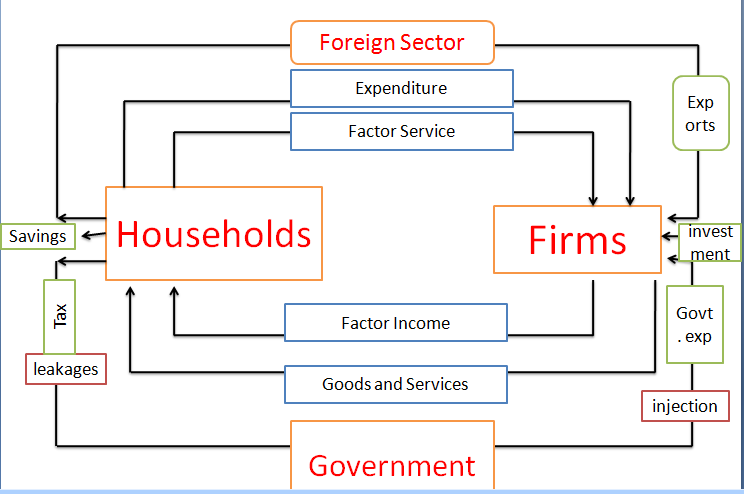
Circular Flow of Income and Expenditure in a Four-sector Model
The four sector model is formed by adding the foreign sector to the three models. It consists of two kinds of international transactions. They are foreign trade and flow of capital and remittance. It is the case of an open economy. The economy receives from remittances and Exports. The economy pays for foreign factors and Imports.
The four-sector model needs the following assumptions:
1. There are four-sectors in the economy, the household sector, the business sector, and the foreign sector.
2. The external sector consists only of import and export of goods and services.
3. The household sector exports only labor and capital.
4. The business sector (or the firms) hires factors of production owned by the household sector and it is the sole producer of goods and services in the economy.
5. The household sector (or the households) is the sole buyer of goods and services. It spends its entire income on the goods and services produced by the business sector. They are also suppliers of labor and various other factors of production.
6. The business sector sells the entire output to households. It does not store.
7. There are no savings and investment in the economy.
8. The household sector receives income by selling or renting the factors of production owned by it.
9. The government does, not exist for all such practical purposes (No public expenditures, no taxes, no subsidies, no social insurance contribution, etc.).
10. It is the case of an open economy.

fig: circular flow diagram of four-sector in the economy.
You may also like this: The Circular Flow in Three-Sector

Leave a Reply